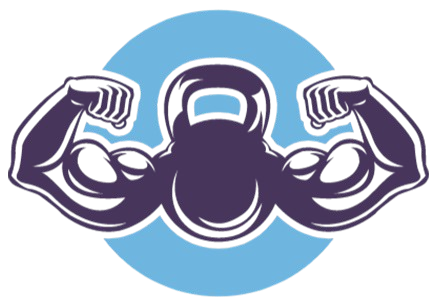Fitpro Income
Starting A Personal Training Business From Home: The Easy Way
Want to run your own personal training business but rather you didn’t pay extortionate rental fees? Prefer to train people in their homes or in your own?
In this article, we will be giving you as much info as you need about starting a personal training business from home.
Let’s go…
Table Of Contents
How are you going to train people?
Setting up your training environment
Marketing
Making money as an online personal training coach
Writing classes and session programs
Giving clients great value for money
Contracts
Conclusion
How are you going to train people?
When personal training out of your home, you will need to decide how and where it is that you are going to be training your clients.
You have the option of training clients on a 1-2-1 basis in your home if you have space and equipment, or you can train them in their own homes by using webcams and personalized training programs, and nutrition plans.
Whichever you choose is down to your personal preference.
Advantages of training people in their own homes
- No gym rent to pay
- Private sessions mean more focus and dedication to your clients
- Less noisy and calmer training environment, which makes some people feel more comfortable
- No concerns over gym equipment being used when you planned to use it
- Less concern over “no shows” as your client will be in their own home and more likely to give notice if they need to cancel a session
- Less competition from other PT’s trying to convert the same people in the gym
- No pressure from a gym to perform more sessions
- Easier to sell sessions as you can afford to make them cheaper as you have no gym rent to pay
- Can train multiple people in a class at once
Disadvantages of training people in their homes
- Lack of equipment means you will have to be more creative with your sessions
- More effort is required to gain new clients
- More complicated insurance and waivers required
- Client progression can be hard to achieve with limited equipment
- Additional start-up costs from equipment such as resistance bands, portable dumbbells, etc
- More travel is required if training people in their own home, less if opting for online training
- Possible to have large gaps of time in between clients
- More clients required to establish a full-time salary as sessions will generally be cheaper than gym-based sessions
This is by no means an exhaustive list, but they should give you a quick idea of some of the pros and cons of training people in their homes or via online training vs gym-based personal training.
Setting up your training environment

Once you have decided which route you are going to take; you are going to need to set up your training environment.
In-home sessions
If you have decided that most of your sessions will take place in your client’s homes, you will need to invest in a selection of the following items for a good starting point.
- Adjustable dumbbell set
- Resistance bands
- Skipping rope
- Calipers
- Bio-electrical impedance machine
- Suspension training straps
- Boxing pads/Mitts
- Kettlebells
- Sandbags
- VIPRS
I would say the minimum equipment required to start training people in their homes would be, suspension training straps, kettlebells, a bioelectrical impedance machine, and boxing pads and mitts.
With this equipment, you will be able to give your clients tough, varied, and progressive training sessions.
Pieces of equipment such as suspension training straps, kettlebells, and VIPRS are some of the least used pieces of kits in gyms, this means you will have the opportunity to show your clients exercise combinations they have never experienced before.
Keeping your clients excited about their workouts and looking forward to the next one is a key part of retaining your client base.
The bioelectrical impedance machine may be something that you have not heard of before, but it is not only a fantastic way of measuring your clients’ progress but also an excellent sales tool.

A bioelectrical impedance scale allows you to get many statistics about your clients.
You can measure their body fat percentage, weight, visceral body fat level, skeletal muscle percentage, BMI, and more.
This can be used once a month to track your client’s progress, but I also used it to great effect during the initial consultation phase when acquiring new clients.
Once a person can see where they are currently at in terms of their health, and you can clearly explain where they are currently at, it makes selling personal training a whole lot easier.
Explaining to someone that they currently have a BMI of 30 which puts them in the morbidly obese category, is usually enough to help people conclude that they need you as a personal trainer.
I understand that there is a certain degree of debate as to the accuracy of these machines, but I found them to be especially useful for my training business.
Using a standard set of scales is a very inaccurate way of representing a client’s progress, as they may add muscle whilst training with you, which would make for a disappointing result when weigh-in time comes.
By using bioelectrical impedance scales, you can clearly show that despite the client not losing any weight, their body fat percentage may have dropped several percent, this does wonders for both client and trainer satisfaction!
Online coaching
If visiting people in their own homes is not an option due to travel concerns or because you are also training clients in a gym environment at the same time, then you will generally require less equipment.
What you will certainly require is a reliable internet connection (pretty much everyone has these days, but just make sure you have the best available to you), and a high-quality webcam for consultations and sessions.
I would recommend that you suggest your client purchase some of the products above so that you can ensure the sessions you prescribe for them stay enjoyable. There is only so creative you can be with push-up variations and HIIT workouts, you want your clients to stay with you for the long term.
Getting insured
I really cannot stress this point enough, if you are training people in their own homes or via online sessions, you need to make sure you are fully insured to do so.
When you train people in a gym, you are covered by the gym’s own insurance should anything happen during a session, when you are training people on your outside of a gym it is up to you entirely to make sure you are insured in case of injury or damage to property.
It is not particularly difficult to get insured, and any premiums you pay will be well worth it. When you first start, it may seem as if this is an unnecessary expense, but the absolute last thing you want is your client to get hurt and then sue you.
If you have no insurance, this will be coming out of your pocket and can crush your business in an instant.
Marketing

Being a fully self-employed personal trainer and running a fitness business from home has a whole host of benefits to it, but you do miss out on some of the advantages you would get from working in a gym environment.
There are no clients that you can talk to, to see if they would need your services, there are no free personal training sessions upon signup that you can try to convert into paid sessions and you have no profile board or classes you can teach to get your face and name known in the gym.
This means that you will have to put a great deal of effort into marketing yourself. If people don’t know you exist, they can’t train with you, plain and simple!
What are your options for marketing yourself as an online coach or in-home personal trainer?
Create a Facebook page
Creating a Facebook page for your business should be your first step in promoting yourself online.
It may not be as useful as it once was, but the main benefit of Facebook is that you can advertise to people specifically in your local area. You can also target people of specific age ranges and types that you think you would be able to help the most.
Create a website
Creating a website is something that I would usually advise against if you are working in a gym environment, as it’s just not necessary and will rarely gain you more clients.
However, when you are training people in your local area and running a fitness business from home, “Google my business” can be a huge benefit to you.
Creating a well-laid-out and professional website with client testimonials, package prices, workout ideas, tips, and helpful blog posts can build your credibility massively.
You then can use Search Engine Optimisation to make sure your website appears in people’s browsers when they search for terms such as “Personal trainers near me”. This is called local SEO, and there are tons of resources you can use to learn how to ensure you appear in people’s search queries.
A great article is Brian Deans Local SEO guide
Backlinko guide to Local SEO for businesses
Teach classes in open spaces
Teaching classes in open spaces may not be the first thing you think of in terms of online coaching, but when you offer workouts to large groups of people, you have a great opportunity to sell yourself and your online personal training packages.
After you have taught a great class, let people know that you are offering online or in-home personal training sessions which allow you to be more dedicated to helping individual clients reach their own goals.
The main focus of these classes is to get yourself known to the local area, they need to be great though, so great that they get people talking in your local area.
Make sure before you decide to start training outdoors that you have the permission of the council or anyone who owns the parks etc that you plan to take your sessions in, and again, ensure you are covered by your insurance to do so.
You can market your classes by taking out ads in local newspapers, both online and offline, and leaving posters in shops, etc.
Make the first class free, but then progress to charging for the classes.
You have now not only got yourself a steady flow of income from the classes you teach but also a great opportunity to convert your class members into paid 1-2-1 clients which you can charge more money per session for.
Use “Google ads”
Once you have created your website, you may start to pick up traffic (website visits) within eight or so months, for most people, this is too slow.
To speed up this process, I would recommend you use “Google Ads”, a service that allows you to advertise directly on Google search results and jump ahead of the competition.
You can advertise on keywords (words that people type into Google), such as “Personal Trainers in Kent” so that you can show up as a result at the very top of Google.
If you are in a small area of the country, you will not be charged a great deal of money for each time a person clicks on your ad, and you will also have a lot less competition, so try t keep your keywords focused on the area very local to yourself. Don’t go to a City, try instead to go to your local town instead.
Create YouTube Videos and workouts
People love free content, by creating YouTube videos giving free workout advice, exercise tips, and weight loss ideas you will be able to engage with many people 24 hours a day.
After you have made a dozen or so videos and are starting to build a decent base of subscribers, you can start to advertise your business at the end of each video and put links to your website in the description.
Make sure your videos have something unique about them and give great content! You may feel like you should be keeping your content for your paying customers, but what you can offer 1-2-1 clients is worth far more than a few tips in a video.
Direct personal training is a mix of therapy and sports coaching, you can’t get that from a YouTube video, only your clients can benefit from that, so don’t worry about giving away great content for free.
When making exercise videos on YouTube, you will be up against some stiff competition, my advice would be to try to be as specialized as possible in whatever topic you are creating content on.
For example, if you make a video on weight loss, you may get seen for the first few days or so but then you will quickly disappear.
If instead, you can be super specific, you may have fewer people searching for your topic initially, but you have a chance to corner the market on that topic.
After you have built up a large subscribers list from making lots of small and specific videos, you can start to branch out and develop content about some of the broader topics like weight loss and stand a chance of getting seen.
Getting seen on YouTube is like being seen on Google, some techniques and practices are important to master to be seen by as wide a range of people as possible.
Remember, the more people that can see your channel, the more can pay for your 1-2-1 sessions or your online coaching.
YouTube SEO is vital to master to make your videos successful, you can find an excellent article by SEO master Neil Patel on YouTube SEO that should help you understand how to get ahead of the competition here.
How to Hack YouTube SEO – 26 Tactics for Gaining Top Results
You will also require a high-quality webcam and recording setup.
You can watch a great video on starting your own YouTube channel by clicking the link below.
How to START A YOUTUBE CHANNEL In 2020: Beginner’s Guide to YouTube & growing from 0 subscribers
Making money as an online personal training coach

As personal trainers, our main goal is always to help people reach their fitness goals and aspirations. However, if this is your full-time career and not just a hobby, you will be needing to make money from your training.
Never feel guilty for asking for money to train your clients, people will not be surprised that you charge money for your sessions, they will understand that it is a business like any other, you can’t walk out of a shop with a sandwich and not expect to pay, so never feel guilty.
Being an online coach means you will initially need to charge less per session than if you were training people directly in a gym, but this is ok because as I have previously explained, you have no gym rent to pay so your expenses will be far lower.
There is also a way that we can make far more money than if you were training in a gym and we will explore that in a second.
1-2-1 training consultations
Training people in their own homes will be your most expensive session, as your client is paying for the convenience of having you come to their home to train them directly. You must factor in a few expenses into your session prices, such as your travel, equipment, and insurance costs.
Your increased travel time between clients will also mean that you will typically be unable to train as many clients as a gym-based PT each day.
You may well need to account for half an hour of travel time between each client, whereas a gym-based PT can train one client after another.
After a quick search for my local area, I can see the prices for a single hour-long session are around the £50 mark. I was surprised at this but remember that each area is unique.
Search for your local area on Google before deciding on your prices so that you can price match your competition, but don’t be too quick to undercut other trainers in your area.
You may think that being the cheapest is the best option, but it can make you come across as being a poorer quality trainer, after all, why wouldn’t you have the confidence to charge the same as the other trainers?
Online classes
I loved training people 1-2-1, there is nothing quite like getting to know your clients on a personal level and seeing how happy achieving their results makes them. However, it is not always possible, so you may need to use online coaching to train some of your clients.
Even though you are not actually in the room with your clients, modern technology has advanced to the point that training people live in a session is not only achievable, it can be almost as good.
There are some huge benefits of becoming an online coach, you have less travel (if any), you have less personal expenses as you will either be conducting classes that don’t require equipment, or you will ask your clients to buy their own equipment, this saves you money which means your earning potential is already greater.
You can train one client straight after the last, a technique I call “shot-gunning”, which allows you the opportunity to see many more clients per day than traveling to people’s homes.
Just because you are training people online, does not mean you have to slash your rates. Your clients are still getting direct 1-2-1 information and advice just like you would train anyone else and have the added convenience of being able to train at later times from the comfort of their own homes.
When I searched for online coaches in my area, I found prices ranging from £75 to £300 per month for online coaching.
It is well worth searching your local area to see what your competition is charging and charging the same as them. If you can charge around £40-50 per one-hour session, with only a few sessions a week you can make a great living.
Which earns more?
So, out of the options above, which earns more, the online coach or the in-house trainer?
in-house trainers
Taking into account the fact that the mobile trainer will have to travel from one client to another, I would say a conservative estimate for sessions per day would be around three if your marketing is really on point.
That would earn you around £36,000 per year if you managed to retain your clients or replace lost ones quickly.
That’s a pretty good living on three hours of work a day!
Online Coaches
With an established online client base, the online coach can train far more clients each day, possibly around five to six if their marketing is top-notch.
Charging an average of £40 per hour session, the online coach would be looking at earning £57,600 per year!
Pretty amazing!
The secret strategy
Why not do both? Why not train people at their homes in 1-2-1 sessions and schedule online coaching sessions?
This way you can fill the gaps in between your home training sessions.
For example, your in-home 1-2-1 sessions may finish at 2 pm on that day, so why not add another two or three sessions in the evening via your online coaching after people finish work?
The Super-Secret strategy! (shhh)

With online coaching, you can make a great deal of money, in a very short time, whilst training clients from all over the world.
How do you do this?
Online classes!
People love classes like Spin and BodyPump, but there are a lot of people who either don’t have time to get to the gym, don’t want to join a gym if they only want to do classes, or don’t feel self-conscious training in a room with lots of other people who may be in better shape than them.
This is where you come in.
By setting up your own classes, you can teach from your living room.
Most meeting room apps allow forty to fifty people to be present in a meeting, so you can have each of your class participants paying £5 per class and make £250 with a full class of 50. That’s a pretty decent way to cap off your day.
If you take just three or four classes per week with these kinds of numbers, you can be bringing in some serious cash.
You can advertise your classes in the same way you have been advertising the rest of your services, via your website, paid ads, YouTube videos, you name it, it can all help.
Writing classes and session programmes

Writing classes and session programs can help you in two different ways.
Firstly, when a prospect becomes a client of yours, it is always helpful to write up at least six months of training programs for them.
By doing this, you are saving yourself a ton of hassle and (god forbid) having to make things up on the spot.
Writing program sheets was the best way of coping with training many clients in one day with as little stress and hassle as possible.
This goes for teaching classes too!
I know that some trainers are so into teaching classes that the flow of the exercises just comes to them during the class, and they can make things up as they go along.
In my experience, it was always much easier to have a sheet of paper with all my exercises on it that I could read from.
This way I could ensure that my class had a seriously tough workout that didn’t miss a single muscle group.
I would have my classes mapped out by the minute so that with the use of a stopwatch, I could complete the full workout in the time I had allotted for it.
By doing this, I never had to go into a class feeling nervous that I would forget exercise combinations or run out of exercises before the time was up and have to blag at the end of the class.
People that go to classes tend to love classes, so you have to trust me, they will spot a blagger a mile away and you’ll lose your client base.
Secondly, something that plays in your favor is the fact that most people are lazy, even PTs.
A lot of them would say that they can create the best workouts ever, but when you watch them on the gym floor they are making it up as they go along.
These may end up being tough workouts, but anything can be tough if you do it for long enough or with enough weight. It does not mean it is a good workout.
Instead, why not offer your services to these PTs by writing up “six-month fat loss workouts”, “12-month functional training periodisation routines”, or, “6 Month hypertrophy routines for people with lower back injuries” and then allowing PTs to download them for a fixed fee?
Once you have written these programs up and put them on the net for sale as a digital download, you can sit back and wait for the cash to come in, there is nothing else you need to do at all.
You could even offer your services on a site like Fiverr.com using the same programs, nothing changed at all, an easy way to increase your options and generate easy cash.
Giving clients great value for money
If there is one piece of advice that I think you should pay the most attention to, it is this.
Be excellent!
You need to be the best personal trainer you can be, and I don’t mean that in the usual silly “You can do it” kind of motivational slurry that you usually hear, I mean actually do it!
If you are an excellent personal trainer, offer more advice and assistance than your client was ever expecting, and go above and beyond their expectations, you will have very happy customers.
Very happy customers tell their friends about how awesome your sessions are and what a great person you are.
They also stay with you for years and not months.
Even if you’re tired, lacking motivation, are having relationship issues, or not feeling great generally, you show up to their sessions, knock on their door or start the online chat with a huge smile on your face and show them how much fun you are having.
When the trainer is having fun, the client will generally have fun too, it’s infectious.
Whether you are training people in a gym environment or training them online or in their homes,
Do not go into personal training with a lazy attitude!
Contracts

Working in a gym covers you for a lot of important factors such as insurance, but they also make your clients accountable for their sessions.
When a gym member buys personal training sessions, they usually will almost always end up signing a contract with you.
Like insurance, these contracts protect both yourself and the client.
There is absolutely no reason that you should not have contracts just because you are running a fitness business from home, in fact, there is more reason to have your own contracts written up when you are training outside of a gym.
When a client signs a contract with you, you have a legally binding agreement that all sessions will be paid for and completed.
This stops your client from walking out on you halfway through your sessions and not paying, or any other annoying issues like that which can frequently happen to PTs.
I would not recommend trying to write up your own contracts, as unless you have a good knowledge of the legal system, they can come across as a little amateurish and not stand up in court if required.
Instead, I would recommend using a local solicitor to write you up a contract that you can both sign before your sessions begin.
In the case of online coaching sessions, you can have a contract written up that can be sent and signed digitally by your client.
This is a really important step, please make sure you do this, you will thank me for it.
Conclusion
Starting a personal training business from home can be a very fruitful way of making a living if you put the time and effort into preparing yourself for it.
You can’t just start going to people’s homes and training them a few times a week and hope they have fifty friends they will introduce you to that will fill your diary up. It just doesn’t work like that.
If you have got your passive income flows organized, your online classes booked and your in-home training sessions arranged, you will be off to a great start with your personal training career with no need to ever join a gym and pay £1000 a month rent to them.
Now that money is yours!
Go get ’em!
